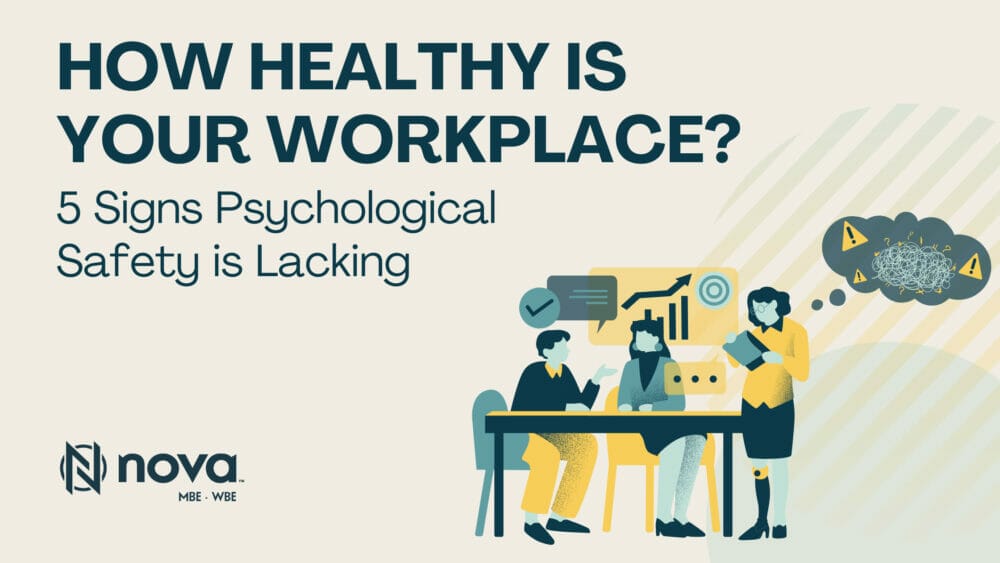Creating a healthy and supportive workplace environment is crucial for the overall well-being of any organization. While physical safety measures are often prioritized, psychological safety is equally important. Psychological safety refers to the sense of trust, openness, and comfort that employees feel within their work environment. When psychological safety is lacking, it can have detrimental effects on employee morale, engagement, and overall well being.
Five signs that indicate a lack of psychological safety in the workplace:
1. Fear of Speaking Up
One of the most evident signs of a lack of psychological safety in the workplace is when team members are hesitant to voice their opinions, concerns, or ideas. This may show itself as very few voices heard in meetings, or the expectation to agree with any ideas presented by leadership. In an environment where individuals feel unsafe or unsupported, they may fear repercussions such as ridicule, judgment, or even retribution for speaking their minds. This fear can stifle creativity, hinder collaboration, and result in missed opportunities for innovation and growth.
A healthy workplace encourages open dialogue, seeks various perspectives, and values the input of all team members. You can model this by inviting specific people to share ideas or reflections who you haven’t heard from in a meeting or presentation.
2. A Lack of Trust
Within an organization, the absence of trust among team members and leadership often mirrors the environment’s level of psychological safety. When trust is not established, individuals feel hesitant to share their truths, ask questions, or acknowledge mistakes, ultimately impeding problem-solving and slowing growth.
To cultivate trust, leadership plays a crucial role in establishing this foundation and setting an example. Leaders can do this by validating ideas, and getting curious about new approaches instead of shutting them down.
3. High Rates of Absenteeism
A lack of psychological safety can manifest as a culture of disengagement and avoidance. When a team member’s mental well being is not protected, stress, burnout, and job dissatisfaction increase, resulting in a lack of motivation to show up to or engage at work.
Leaders and team members should pay attention if this is becoming a pattern across multiple team members, and think about how the organization and team can shift the environment to create a space where employees want to be present.
4. Pressure for “Perfection”
This kind of pressure can result in employees showing up to work even when they are unwell, feeling like they aren’t able to ask for help or clarification in their work, or needing to appear “busy” at all times. Feeling like you need to be “on” at ALL times is an indicator that your work environment is not prioritizing psychological safety.
Normalizing things like taking a “mental health” day, admitting to what we don’t know, and just being human and imperfect can help alleviate this pressure.
5. High Turnover Rates
High turnover rates are a red flag for internal culture. When employees feel unsupported, excluded, or undervalued, they are more likely to seek opportunities elsewhere. Constantly replacing talent not only incurs substantial financial costs but also disrupts team dynamics and lowers morale among remaining employees.
A healthy workplace cultivates a sense of belonging, encourages professional growth, and recognizes the unique contributions of its team members.
Creating a psychologically safe workplace is a critical aspect of promoting employee well-being, fostering engagement, and driving organizational success. By recognizing the signs that psychological safety is lacking, leaders within an organization can take action to create a healthier environment for their teams.

